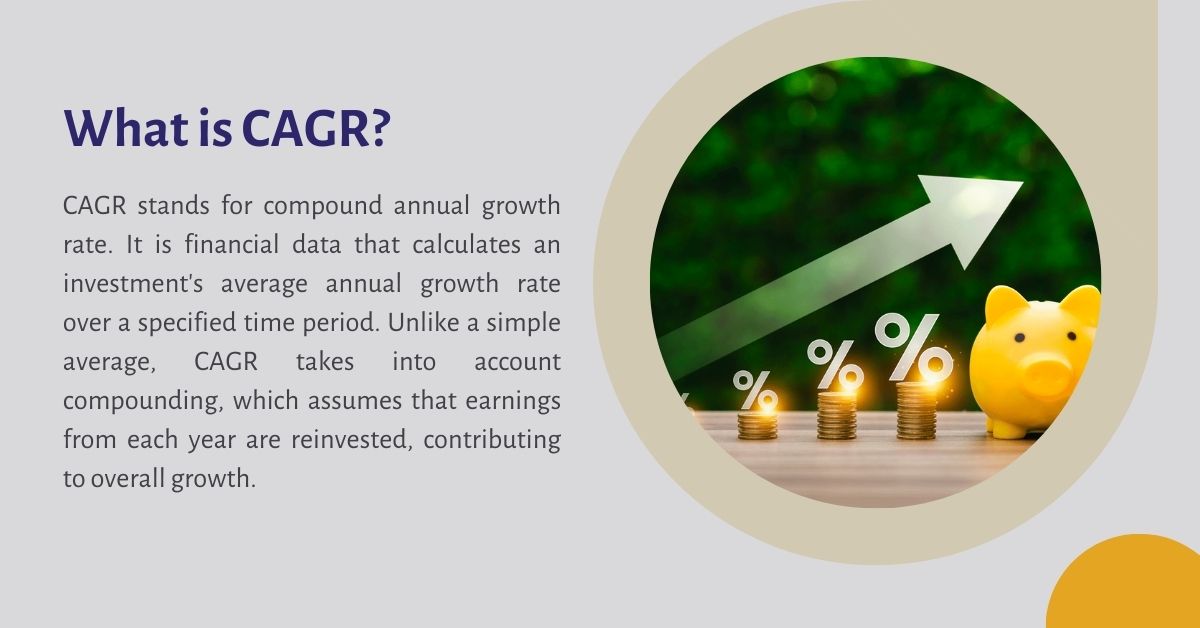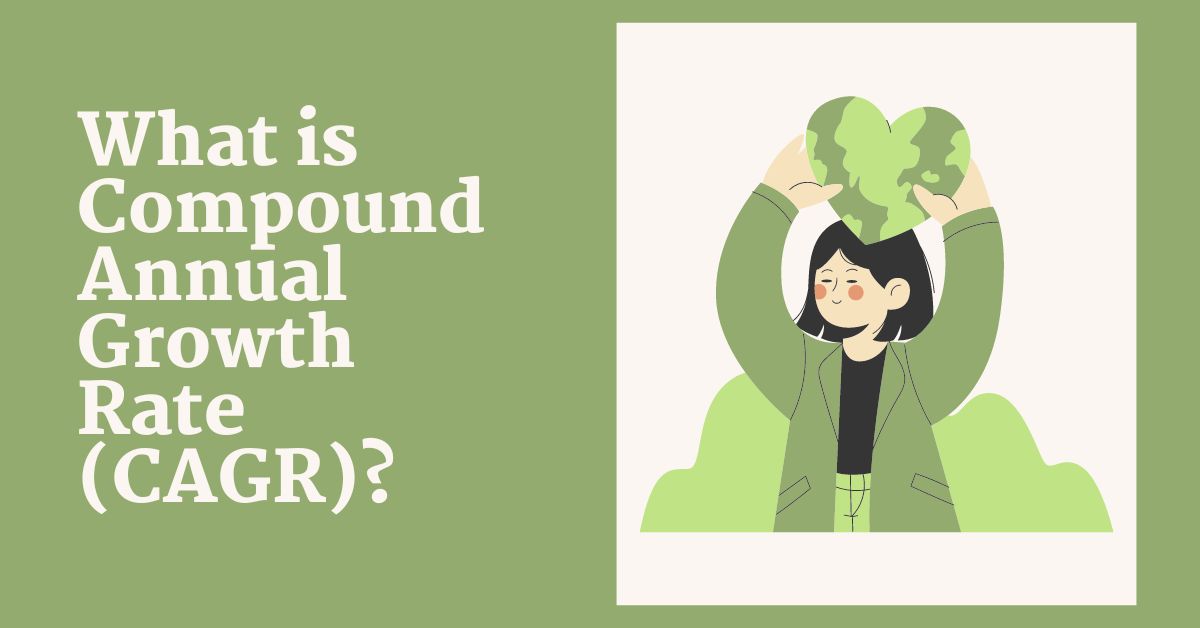The compound annual growth rate (CAGR) measures the average annual growth of an investment over a certain period of time, taking compound interest into account. It helps investors to evaluate and compare investments, set financial goals, and assess long-term performance.
While it is easy to calculate and useful for smoothing out fluctuations, it ignores cash flows and market fluctuations. A good CAGR is usually above inflation, with 10% or more desirable for long-term investments such as stocks. Unlike simple growth rates, CAGR takes into account reinvested earnings, which provides a more accurate view of sustainable performance over time.
The annual growth of your investments over a certain period of time is known as the compound annual growth rate or CAGR. In other words, it tells you how much money you’ve made from your assets each year over a given period. This is one of the most accurate ways to find out how your investment returns will change over time.
In this article, we’ll look at the idea of CAGR, what it means, and how it can help investors make smart decisions.
What is CAGR?

CAGR stands for Compound Annual Growth Rate. It is financial data that calculates the average annual growth rate of an investment over a certain period of time. In contrast to a simple average, the compounding of interest, which is based on the reinvested earnings of each year, contributes to the overall growth in the CAGR.
CAGR provides a more accurate assessment of an investment’s performance than other approaches. By smoothing out the effects of volatility, CAGR allows investors to evaluate different investments and determine their long-term growth prospects.
How CAGR Work?
Assuming compound growth, the CAGR determines the average annual growth rate of an investment over a certain period of time.
This means that it takes into account the effects of the annual reinvestment of earnings. To calculate the compound annual growth rate (CAGR), divide the final value of the investment by its initial value, multiply the result by one, divide it by the number of years and then subtract one.
To convert the final result into a percentage, multiply it by 100. Put simply, the CAGR smoothes out the performance of an investment and makes it easier to compare different investments and assess their long-term development potential.
CAGR Formula
CAGR Formula: CAGR = (Ending Value / Beginning Value)^(1 / Number of Years) – 1
Example of How to Use CAGR
Consider Infosys, a famous Indian IT company. We calculate the CAGR as follows: CAGR equals (5 trillion / 1 trillion)^(1 / 5) – 1. This would offer you the average annual growth rate of Infosys’ market capitalization over the previous five years.
Advantages and Disadvantages of Using the CAGR
| Feature | Advantages | Disadvantages |
|---|---|---|
| Simplicity | It is easy to calculate and understand. | Ignores the volatility of returns. |
| Consistency | It provides a standardized measure for comparing investments. | It doesn’t take into account cash flows or extra investments. |
| Focus on long-term performance | It smooths out short-term fluctuations. | This may not accurately reflect performance in volatile markets. |
| Comparability | It allows for easy comparison of different investments. | It doesn’t offer a comprehensive view of investment performance. |
How Investors Use the CAGR?
Investors use the CAGR to assess the success of investments. The CAGR, which indicates a smoothed average annual return, helps investors to compare different investment options such as shares, mutual funds and real estate. It also enables investors to assess the long-term growth prospects of an investment and make more informed decisions about asset allocation.
CAGR is also important for setting financial goals and monitoring progress towards those goals. For example, an investor can calculate the required CAGR for an investment to reach a certain target amount by a certain date.
Read More:
- What Is Debt To Equity Ratio? The Ratio That Reveals A Company’s True Story
- What is PEG Ratio in Share Market? Balancing Price, Earnings, and Growth
What Is a Good CAGR?
A good CAGR depends on several factors, including the type of investment, the investor’s risk tolerance and general market conditions. In general, a CAGR that exceeds inflation is considered excellent. A CAGR of 10% or more is considered desirable for long-term investments such as stocks and mutual funds, but past performance is no guarantee of future results.
It is important to analyze the risk profile of the investment and compare its CAGR with appropriate benchmarks. Ultimately, a good CAGR is one that meets an investor’s financial goals and expectations while remaining within their tolerance level.
What Is the Difference Between the CAGR and a Growth Rate?
| Feature | CAGR | Growth Rate |
|---|---|---|
| Calculates | Average annual growth rate over a specific period (compounded) | Annual growth rate at a specific point in time (not compounded) |
| Considers | Impact of reinvesting earnings | Only the change from one year to the next |
| Accuracy for long-term performance | More accurate | Less accurate |
| Use case | Comparing investments, setting financial goals | Analyzing short-term trends |

